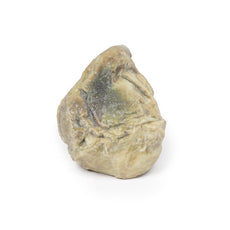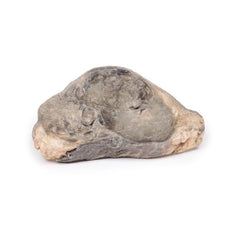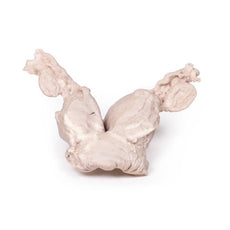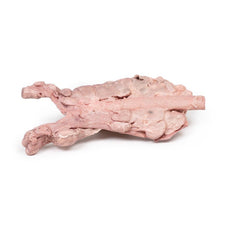Your shopping cart is empty.
3D Printed Lung Staphylococcus Aureus Abscesses
Item # MP2064Need an estimate?
Click Add To Quote

-
by
A trusted GT partner -
FREE Shipping
U.S. Contiguous States Only -
3D Printed Model
from a real specimen -
Gov't pricing
Available upon request
3D Printed Lung Staphylococcus Aureus Abscesses
Clinical History
A 55-year old female presents with severe dyspnoea, a productive cough and oral
candidiasis. She is immunosuppressed with a history of rheumatoid arthritis being treated with steroids and
cyclophosphamide. Sputum cultures grew staphylococcus aureus. She was commenced on appropriate therapy but died
shortly after admission.
Pathology
The right lung has been bisected. There are multiple irregular abscess cavities
visible. The largest of these, in the apex of the lower lobe, measures 4 x 3 cm in diameter. At the apex of the
upper lobe, there is another irregular abscess cavity which is less obvious, approximately 3 x 2 cm in diameter
surrounded by a zone of consolidation. A number of small abscesses are also seen. Patchy consolidation is present in
the middle lobe. Numerous bronchi contain and are obstructed by plugs of pus. Cultures taken from the specimen grew
Staph. aureus. This is an example of multiple Staphylococcal lung abscesses in an immunosuppressed patient.
Further Information
Staphylococcus aureus is a gram-positive coccus. It is part of the microbiota
of the human body usually found on the skin or upper respiratory tract. It is usually commensal but may cause
opportunistic infections such as skin infections commonly or less frequently, pneumonia and endocarditis. It can
cause both community and hospital-acquired pneumonia. Hospital-acquired Staph pneumonia is most commonly associated
with intubation and prolonged admissions. Prevalence of hospital acquired pneumonia caused by Methicillin-Resistant
Staph Aureus (MRSA) is increasing.
It is an important cause of secondary bacterial pneumonia in patients
following viral respiratory infection e.g. post influenza infection. Intravenous drug users have an increased risk
of developing ‘metastatic’ Staph. aureus pneumonia and endocarditis, as a result of staph bacteraemia caused by the
use of dirty needles. Staph. aureus pneumonia is severe and associated with an increased rate of complications, such
as ca vitating abscess formation and empyema.
Staph Aureus pneumonia should be suspected in any of the high-risk groups above as well as patients with pneumonia with rapid deterioration, haemoptysis, early multilobar pneumonia on X-ray, pulmonary cavitation or disseminated intravascular coagulation. First line treatment for Staph. aureus pneumonia is penicillin antibiotics, such as flucloxacillin. Staph aureus resistance to penicillin is very common with penicillinase production e.g MRSA. MRSA is treated with glycopeptide antibiotics, such as vancomycin, or oxazolidinone antibiotics, such as linezolid.
Download: Handling Guidelines for 3D Printed Models
Handling Guidelines for 3D Printed Models
GTSimulators by Global Technologies
Erler Zimmer Authorized Dealer
The models are very detailed and delicate. With normal production machines you cannot realize such details like shown in these models.
The printer used is a color-plastic printer. This is the most suitable printer for these models.
The plastic material is already the best and most suitable material for these prints. (The other option would be a kind of gypsum, but this is way more fragile. You even cannot get them out of the printer without breaking them).The huge advantage of the prints is that they are very realistic as the data is coming from real human specimen. Nothing is shaped or stylized.
The users have to handle these prints with utmost care. They are not made for touching or bending any thin nerves, arteries, vessels etc. The 3D printed models should sit on a table and just rotated at the table.





































































